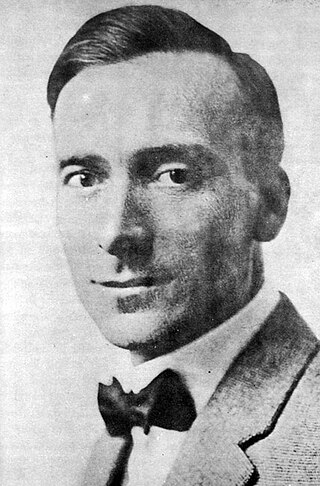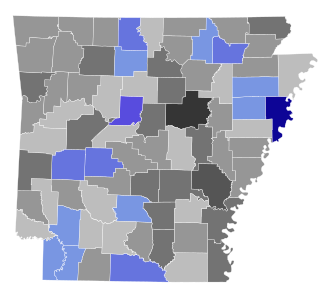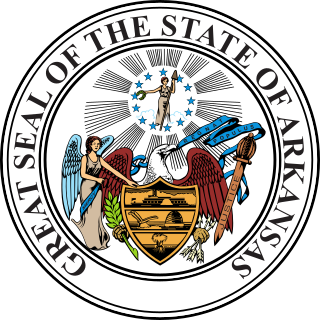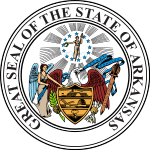
Homer Martin Adkins was an American businessman and Democratic politician who served as the 32nd Governor of Arkansas. Adkins is remembered as a skilled retail politician and a strong states' rights proponent and social conservative who served as governor during a period when Arkansas departed from several national economic and societal trends. The Adkins administration fought federal influence in Arkansas during the post-New Deal era; successfully courting federal wartime production investment, during World War II, while battling the federal resettlement of Japanese-Americans in the state and Supreme Court civil rights decisions.

Harvey Parnell was an American farmer and politician from Southeast Arkansas. Parnell served in the Arkansas General Assembly for eight years, first in the Arkansas House of Representatives, and later serving a term in the Arkansas Senate. Following the re-establishment of the lieutenant governor position, Parnell won the statewide election and served under Governor John Martineau. When Martineau resigned to take a federal judgeship in March 1928, Parnell was elevated to become the state's 29th governor, a position he would hold until 1933. Early in his time as governor, Parnell was responsible for Progressive reforms popular with rural voters, including expansion and modernization of the highway system and public school reform. But as the Dust Bowl and Great Depression ravaged the Arkansas economy, Parnell's programs were blamed for bankrupting the state, and his popularity plummeted. He left politics after his second full gubernatorial term ended in January 1933.

The Democratic Party of Arkansas is the affiliate of the Democratic Party in the state of Arkansas. The current party chair is Grant Tennille. Former U.S. president Bill Clinton was born in Arkansas, and served as state governor from 1979 to 1981 and 1983 to 1992.

William Lee Cazort, Sr. was a lawyer and Democratic politician from Johnson County in the Arkansas River Valley. Winning a seat in the Arkansas House of Representatives in 1915, Cazort became a rising star in Arkansas politics for the next eight years. He was defeated in the 1924 Democratic gubernatorial primary, but served as the fifth and seventh Lieutenant Governor of Arkansas from 1929 to 1931 under Governor Harvey Parnell and from 1933 to 1937 under Governor Junius Marion Futrell. Cazort also sought the Democratic gubernatorial nomination in 1930 and 1936, but failed to gain necessary statewide support and withdrew before the primary both times.
Lawrence Elery Wilson was an American businessman and politician from South Arkansas. He served in the Arkansas House of Representatives from 1927 to 1931. He was elected Lieutenant Governor of Arkansas, serving under Governor Harvey Parnell until he was defeated by Lee Cazort in the Democratic primary.

The Arkansas Commissioner of State Lands is an executive position and constitutional officer within the Arkansas government which has been an elective post since 1874. Land Commissioners are elected to four year terms. The current state Land Commissioner is Republican Tommy Land.

Lee A. Seamster was a lawyer and politician from Northwest Arkansas. Passing the bar in 1913, Seamster practiced law in Bentonville, and represented the area in the Arkansas House of Representatives from 1919 to 1920, and served as mayor of Bentonville from 1921 to 1922, until he resigned to move to Fayetteville to open a law practice. Over the next two decades, Seamster practiced law and served as Chancery Judge of the 13th District for eighteen years before representing the Fayetteville area in the Arkansas House from 1947 to 1948. He was appointed to serve as Chief Justice of the Supreme Court of Arkansas from 1955 to 1956 by Governor Orval Faubus.

Roberta Fulbright (1874–1953) was an American businesswoman who consolidated her husband's business enterprises and became an influential newspaper publisher, editor, and journalist. She used her paper to push civic responsibility and women's rights. Fulbright was the 1946 Arkansas Mother of the Year, a co-founder of the Arkansas Newspaper Women, and was posthumously inducted into the Arkansas Women's Hall of Fame in its inaugural group of honorees.

The 1937 Arkansas special senatorial election was held on October 19, 1937, following the death of longtime Democratic senator Joe T. Robinson. Robinson was a powerful senator, staunch Democrat, and strong supporter of United States President Franklin D. Roosevelt, and was instrumental in passing many New Deal programs through the Senate. Arkansas was essentially a one-party state during the Solid South period; the Democratic Party controlled all aspects of state and local office. Recently elected Democratic Governor of Arkansas Carl E. Bailey initially considered appointing himself to finish Robinson's term, but later acceded to a nomination process by the Democratic Central Committee, avoiding a public primary but breaking a campaign process. Avoiding the primary so angered the public and establishment Democrats, leading them to coalesce behind longtime Democrat John E. Miller as an independent, forcing a general election.

Arkansas held a general election on November 8, 1932. At the top of the ticket, Franklin D. Roosevelt won the state handily in his successful bid to become the 32nd President of the United States. Arkansans elected Hattie Caraway to the United States Senate, the first woman elected to a full term in history. For the United States House of Representatives, Bill Cravens, a former Representative from 1907 to 1913, returned to politics and defeated a wide field in the Arkansas 4th. Tilman Parks defeated several challengers to retain the Arkansas 7th. All of Arkansas's statewide constitutional offices were up for reelection, including governor. Incumbent Harvey Parnell declined to run for reelection, and was supplanted by Junius Marion Futrell.

The Forty-Eighth Arkansas General Assembly was the legislative body of the state of Arkansas in 1931 and 1932. In this General Assembly, the Arkansas Senate and Arkansas House of Representatives were both controlled by the Democrats. In the Senate, all 35 senators were Democrats, and in the House, 99 representatives were Democrats, with one Republican. It was the first General Assembly to use redistricted legislative districts from the 1930 United States Census.
William U. McCabe was an attorney and politician from Mountain Home, Arkansas. He served in the Arkansas Senate from 1921 to 1924, and the Arkansas House of Representatives from January 1931 until his assassination on May 6, 1931. McCabe worked to reform the Arkansas Constitution and state highway funding system during a period of good government reforms in the state.

The 1930 Arkansas gubernatorial election was held on November 4, 1930, to elect the governor of Arkansas, concurrently with the election to Arkansas's Class II U.S. Senate seat, as well as other elections to the United States Senate in other states and elections to the United States House of Representatives and various state and local elections.
J. Oscar Humphrey was a politician from Southwest Arkansas. He served as the Arkansas State Auditor from 1929 to 1935 and 1937–1956, despite having both arms amputated above the elbow due to a sawmill accident as a child.

The 1940 Arkansas gubernatorial election was held on November 5, 1940.

The 1926 Arkansas gubernatorial election was held on October 5, 1926.
Vada Sheid was a politician from Mountain Home, Arkansas, who served in the Arkansas General Assembly for 20 years; in the Arkansas House of Representatives from 1967 to 1977, the Arkansas Senate from 1977 to 1985, and returning to the House during the 79th Arkansas General Assembly. She is the first woman to serve in both houses of the General Assembly, and the first non-widow's succession woman to serve in the Arkansas Senate. Known by constituents as "Miss Vada", she worked on behalf of Ozark Mountain residents with a focus on education and infrastructure projects.

Arkansas held a general election on November 3, 1936. At the top of the ticket, Franklin D. Roosevelt won the state handily in his reelection bid. Arkansans reelected Joe T. Robinson to the United States Senate for a fifth term. For the United States House of Representatives, the six Representatives seeking reelection were unopposed in the general election. In the Arkansas 7th, Wade Kitchens replaced a retiring Tilman B. Parks.
















